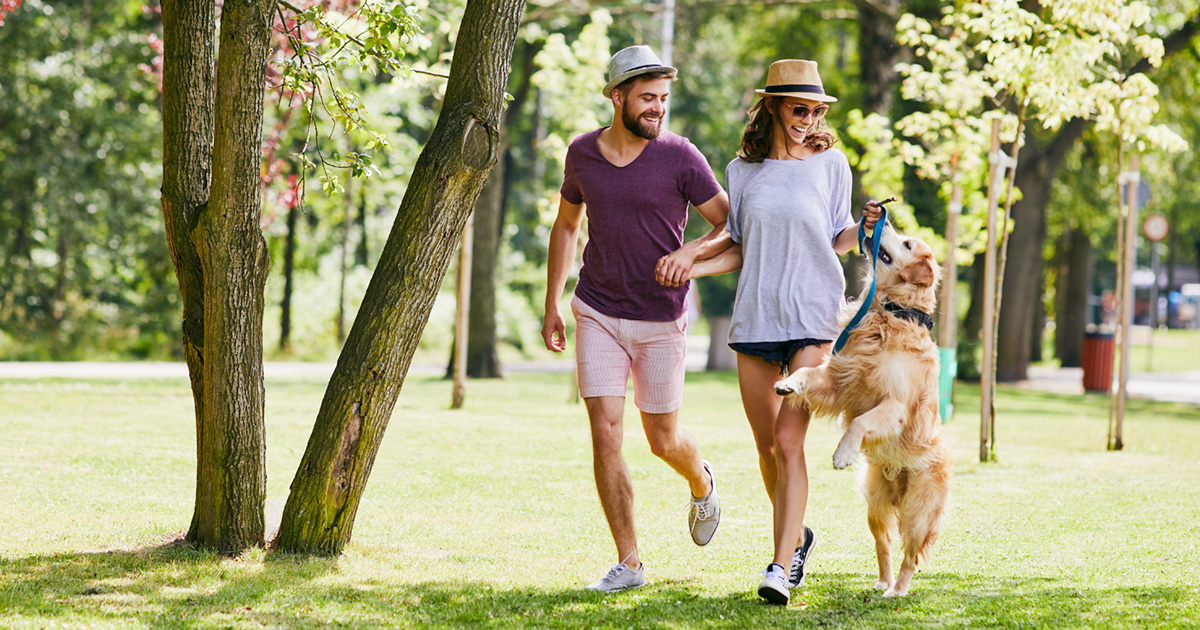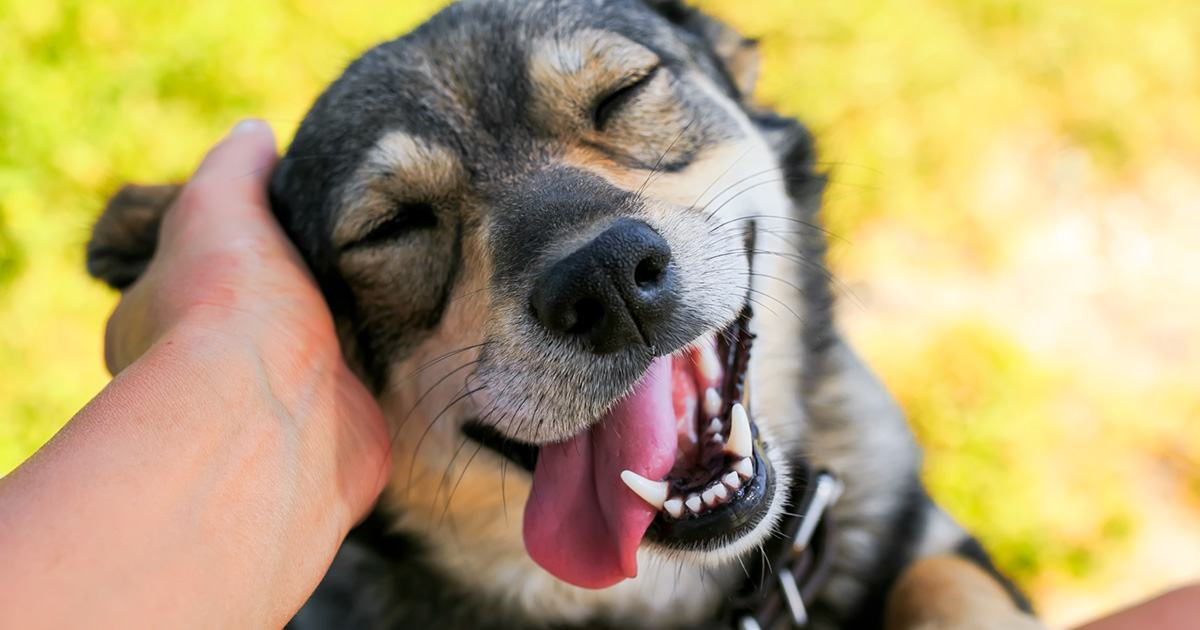
By Sean Howard, PMCT
This can be a difficult time for everyone, including our four-legged friends.
Over the past two weeks, many of us have lost access to our favourite green spaces. And this can make obeying social distancing hard when walking our furry friends. Just this week, I found myself waiting as a family of 5 negotiated their bikes onto the Rail Trail. Their daughter was having none of it and everyone began to queue up behind them. All under the watchful eyes of a bored bylaw officer who had parked their vehicle at the trailhead.
A fellow walker was red-faced with frustration and perhaps even embarrassment as their beautiful labrador puppy bounced and jumped and ran in every direction. Their attempts to yank and yell were only escalating the situation. They finally ended up tangled in another dog’s leash and both owners were clearly doing their best to maintain social distance while the puppy got loose and tore off, running of course, up to the bylaw officer who had just gotten out of their vehicle.
Maintaining social distancing is hard, let alone while trying to walk two dogs. One of my dogs wants to run joyfully up to people and squirrels while the other one is on the lookout for any dogs that might be a threat. So I asked both of my dogs for a “walk with me!” and we turned and deftly escaped the growing blockage.
Yanking and yelling does nothing to help our dogs nor does it provide for a joyful walk for either of us. And yanking on a dog’s leash that is attached to their collar can lead to serious injury. Even small yanks add up to serious risk when delivered hundreds of times a walk.
Creating a Cue for “Walk with Me”.
If there is one thing most of us have right now, it’s time. So invest a little of this time into something fun for your four-legged family member and send a gift to your future self.
First, we must select a treat that your dog truly adores. I’ve worked with thousands of dogs and I can’t tell you the number of times I’ve been told, “my dog isn’t treat motivated” only to find out that their dog isn’t motivated by bland dog biscuits. I don’t know about you, but I also don’t work for bland biscuits.
Use something super special. I use block cheese, hot dogs and even chicken breast. I cut these into tiny pieces and place them in a ziploc baggie that goes into a coat or hoodie pocket.
Starting indoors, where there are fewer distractions, I get my dogs attention by asking for something they know, like a sit or to come to me. When they do, I say “yes!” and then give them a treat.
I then start walking slowly away, giving them a cluck or even saying their name to let them know I want them to come with me. As soon as they reach position, I say “yes!” and give them a treat.
Position is a term we use in training to refer to the place we would like our subject to happily get to. In this case, position is directly beside me, shoulder aligned to my left or right leg. Which leg is up to you.
Please note that our dog is not going to go to position and hold position, not at first. You have to be good at marking. Marking is where we give a specific sound or gesture at the exact moment they do the thing we asked them for. In this case, I recommend saying, “yes!”
One additional tip is to reward in place. If I am trying to get them to walk in step with me on my left side, I will reward them with a treat from my left hand brought to where their head should be right after they hit their mark.
Let’s break this down.
- I have super high value treats ready
- I start walking and encourage them to walk with me (we will add the queue in a second)
- The millisecond they hit the point where they would be walking exactly beside me, I say “yes!” and reward them with a treat as quickly as I can.
- This should feel like a game. It should be FUN for both of you.
Troubleshooting
- They are likely going to shoot past the position you want them to hit. That’s okay, give the marker (yes!) when they hit the right position. And then feed them, no matter where they end up. The better you are at marking the exact millisecond they reach position, the faster the training will go.
- What if they go to the wrong side of your body? Just pivot 180 degrees on your heel (putting them on the correct side of you) and encourage them to catch up and mark them when they hit position.
- What if they just stay in their sit and don’t follow you? Try getting them out of the sit with a toy or just calling them to another room and then start walking before they go into a sit again. Many of us have rewarded “sit” to the point that it has become their default behaviour so you may have to break out of this to start practicing this.
- What if they keep walking ahead of you and turning around to face you and sit? Be sure you are giving the “yes!” at the exact moment they reach position and not after they’ve passed you. Next, make sure you aren’t taking a long time to find a treat.
- Finally, practice rewarding in place – making sure that after you say yes, you are fast to get the treat to their mouth in a way that they can stay walking beside you.
Once they start to get the hang of it, it’s time to put it on cue. I like saying, “Walk with me!” And then stepping away from them. But you can use any cue you like. Just keep it consistent and something you won’t say by mistake.
Now practice with using the cue. The instructions are the same as above, except now you begin by stepping away and saying “Walk with me!” and then clicking when they hit position.
Once they are getting the hang of things inside, you can start introducing this on walks. Start by practicing in situations that aren’t overly exciting or distracting. Say the cue and start to walk slowly, marking and rewarding your dog with a treat when they hit their position. As they really start to understand and enjoy this new game, start to randomize how quickly you mark them. In other words, we can start to raise the criteria for a mark, asking our dog to walk in place for a step before we say, “yes!”
Raising criteria takes patience. I might say “Walk with me!” and when they hit the right spot, I mark it immediately with a “yes!” and then reward. I do this a few more times… every two steps or so. And then I might pause and not give a “yes!” right away. I’ll wait a half step and if they stay in position, then I will mark it with a “yes!” and reward. But then I go back to immediately for a few times before escalating my criteria again.
Within a couple of training walks, you should be able to have them stay in position for a couple of steps. If they start to lose interest or not hold their position, this means we have gotten too greedy and we need to go back to making it easier and mark for immediate position for a while.
With time, you will need less treats with you. This will become a fun thing they love to do for a few dozen feet with you, their attention on you.
I make sure to use this periodically on walks. But I also allow them to explore and have fun. After all, we are out on a walk for them. And then every once in a while, I’ll ask for a “Walk with me!” for a few dozen steps and reward them as they nail it with joy.

A couple caveats. Most dogs can’t get the exercise they need from a leash walk. It’s just not possible as they are built to run and leap at speeds that we just can’t match. So please be kind and remember that they are going to be going a little stir crazy, much as we are.
Second, if we can’t give them the exercise they need, we can give them the ability to smell and explore. Please don’t keep your dogs on a permanent heel beside you. They need mental stimulation and for them that is the ability to smell the world around them and explore the scents that others have left.
“Walk with me!” is a fun and safe way to get your dog’s attention and control where they are in a situation. It also puts you both in motion, allowing you to move away from other walkers, dogs or even bylaw officers. And it can help dogs with anxiety to focus on a game while you get them out of an otherwise overwhelming decision.
Sean Howard is a PMCT (Pat Miller Certified Trainer), a coveted animal training title that includes several levels of study, an internship and apprenticeship. He is also a producer and performer on multiple podcasts, including the animal-friendly End of Time and Other Bothers. Find out more about Sean at http://FableAndFolly.Productions.
